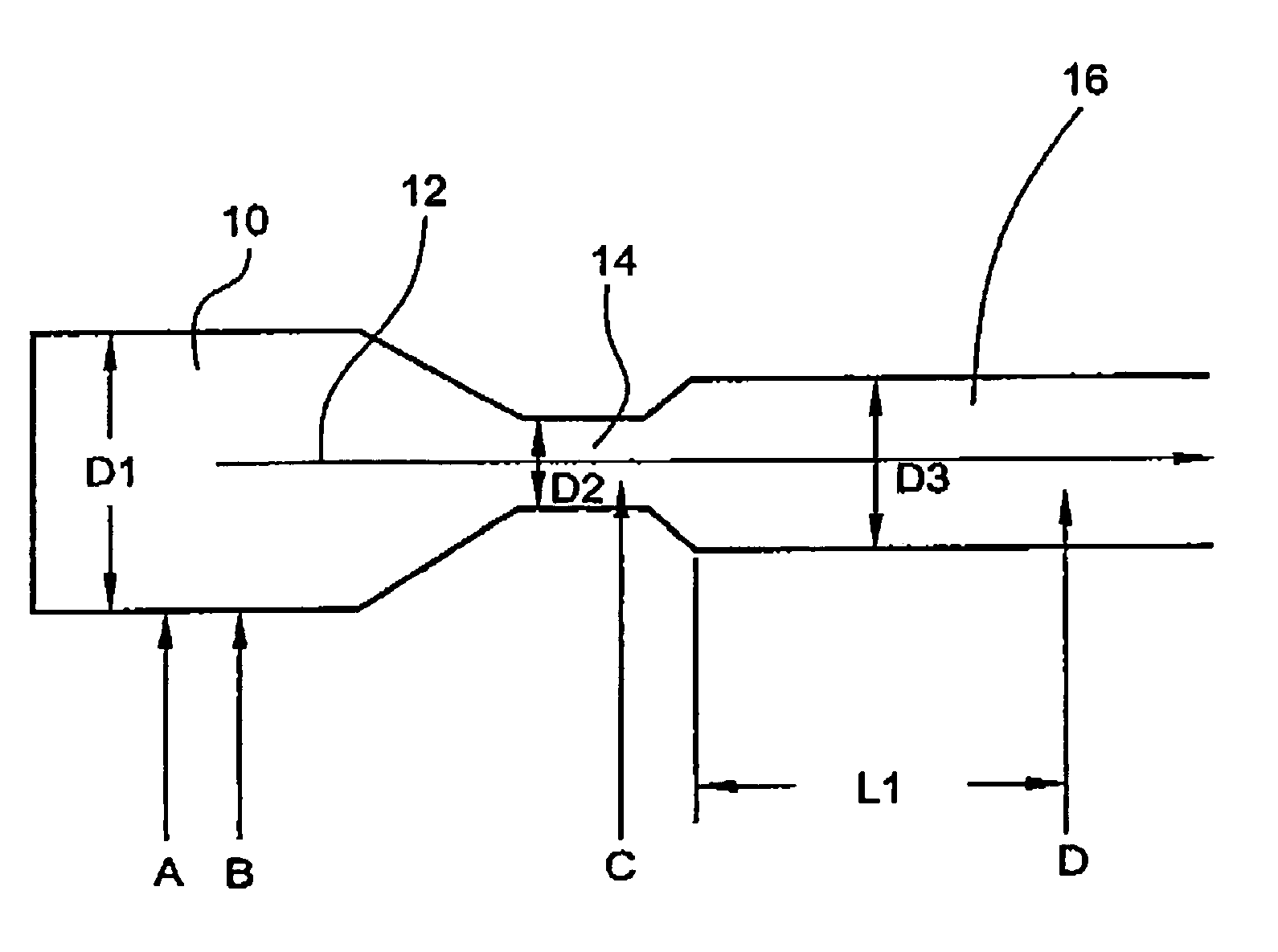Fumed metal oxide particles and process for producing the same
a technology of metal oxide particles and process, applied in the field of metal oxide particles, can solve the problems of expensive post-production treatment steps
- Summary
- Abstract
- Description
- Claims
- Application Information
AI Technical Summary
Benefits of technology
Problems solved by technology
Method used
Image
Examples
examples 1-4
[0037]These examples demonstrate the process of producing fumed metal oxide particles according to the invention. In particular, these examples demonstrate four processes used to produce fumed silica particles having different surface areas. The following processes were carried out using a pilot scale reactor as described above and as depicted in FIG. 1. The approximate dimensions of the pilot scale reactor, with reference to FIG. 1, were as follows: D1=18.4 cm, D2=9.7 cm, D3=69 cm, and L1=213 cm. The liquid feedstock was a commercially available octamethylcyclotetrasiloxane (OMTS), and the stream of combustion gas was established by combusting a mixture of air and natural gas. The quantities of air, natural gas, and OMTS utilized in each of the processes are set forth in Table 1. The liquid feedstock (i.e., OMTS) was injected into the stream of combustion gas at the constricted portion 14 of the reactor (i.e., the portion with diameter D2in FIG. 1), and the reaction mixture was que...
example 5
[0042]This example demonstrates the unique particle size features of the fumed silica particles of the invention. The fumed silica particles of Examples 1-4 were analyzed in accordance with the methods described herein to determine the primary particle sizes d and the aggregate sizes Dcirc for 2000 aggregates from each sample of the fumed silica particles (i.e., the silica particles produced by each of Examples 1-4). The average of the primary particle sizes dave, the average of the aggregate sizes Dcirc ave, and the geometric standard deviation of the aggregate sizes σg (Dcirc) then were calculated. In particular, the average of the primary particle sizes dave of the fumed silica particles was determined using the BET surface area (SA) measurements and the equation: dave (nm)=1941 / SA (m2 / g). Aggregate size Dcirc was determined using TEM image analysis to measure the area, A, of each aggregate and calculating the aggregate size Dcirc using the equation Dcirc=√{square root over (4A / π...
PUM
| Property | Measurement | Unit |
|---|---|---|
| temperature | aaaaa | aaaaa |
| temperature | aaaaa | aaaaa |
| solidifying temperature | aaaaa | aaaaa |
Abstract
Description
Claims
Application Information
 Login to View More
Login to View More - R&D
- Intellectual Property
- Life Sciences
- Materials
- Tech Scout
- Unparalleled Data Quality
- Higher Quality Content
- 60% Fewer Hallucinations
Browse by: Latest US Patents, China's latest patents, Technical Efficacy Thesaurus, Application Domain, Technology Topic, Popular Technical Reports.
© 2025 PatSnap. All rights reserved.Legal|Privacy policy|Modern Slavery Act Transparency Statement|Sitemap|About US| Contact US: help@patsnap.com


